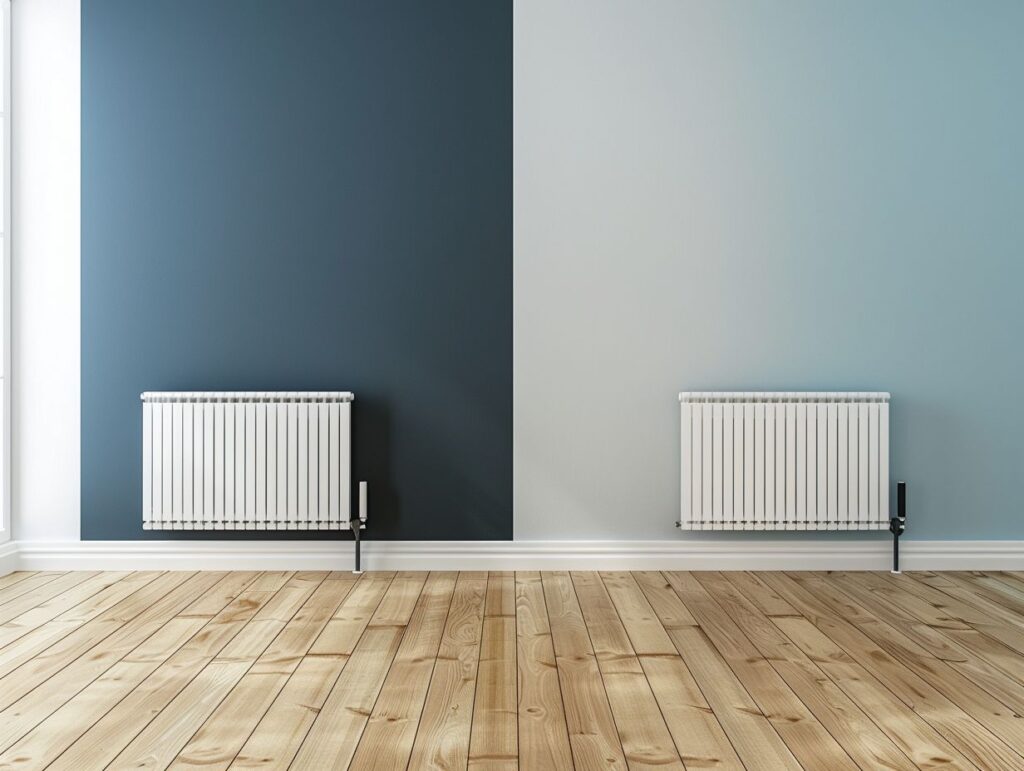If you are considering upgrading your heating system, you may be weighing the decision between horizontal or floorstanding radiators. This comparison will evaluate the efficiency, heat distribution, space considerations, and aesthetic factors of both options.
Additionally, we will delve into the installation and maintenance requirements, associated costs, and provide tips for proper upkeep. By the end of this analysis, you will have a clearer understanding of which radiator type is the most suitable for your space, as well as some popular brands and models to consider.
Key Takeaways:
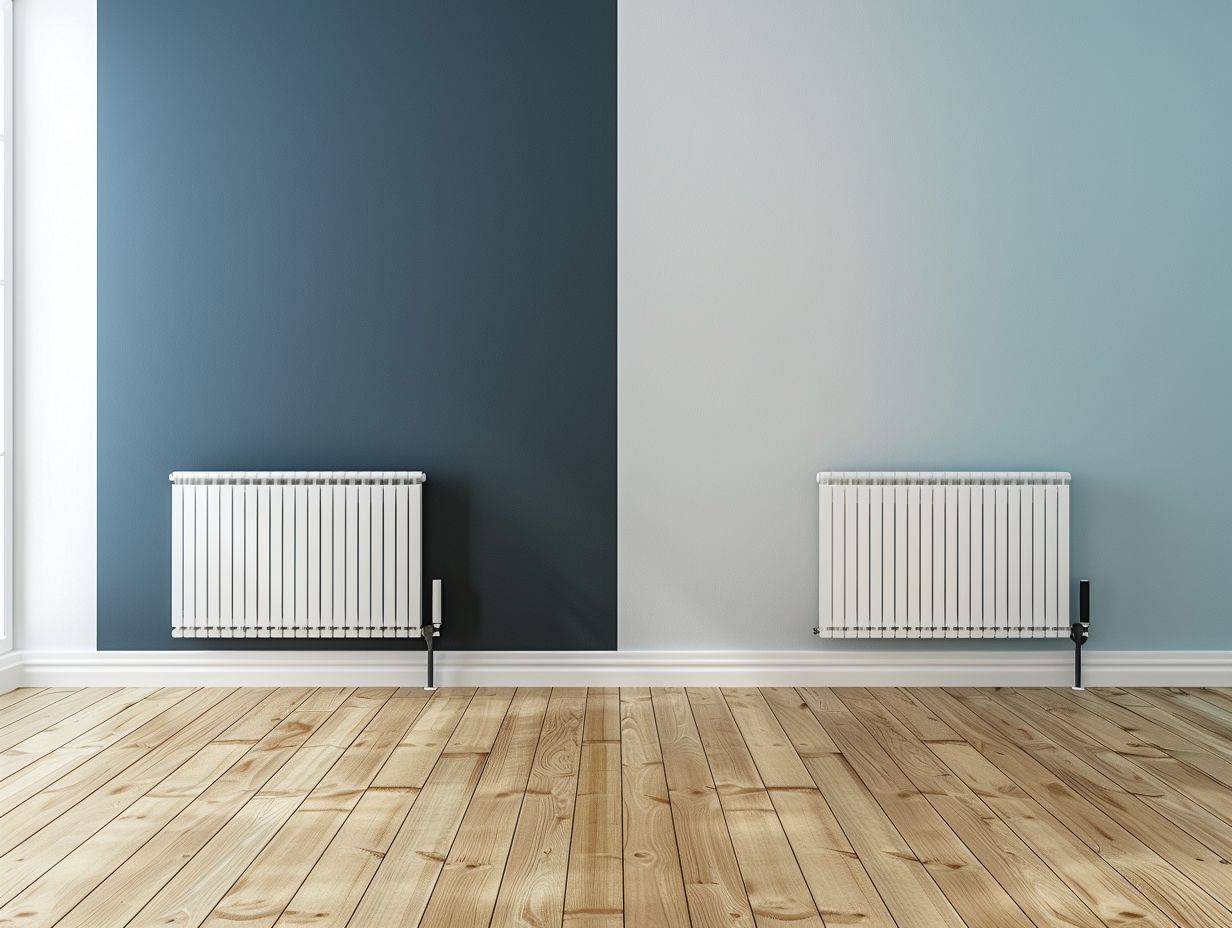
- Horizontal radiators provide more efficient heat distribution throughout a room compared to floorstanding radiators.
- Floorstanding radiators are a better choice for smaller spaces due to their space-saving design and aesthetic appeal.
- Proper installation and maintenance of both types of radiators are crucial for their longevity and effectiveness in heating a space.
Comparison of Horizontal and Floorstanding Radiators
When comparing horizontal and freestanding radiators, you should consider key factors such as heat output capacity, space-saving features, and design options.
Horizontal radiators are recognised for their effective heat distribution throughout the room, whereas freestanding radiators provide versatility in placement and can be particularly suitable for rooms where wall mounting is not feasible.
Efficiency and Heat Distribution
When selecting radiators, you need to consider efficiency and heat distribution as key factors. It is important to understand the heat output capacity measured in British Thermal Units (BTU) and how convection currents contribute to even heat distribution throughout the room for optimal radiator performance.
Radiators with higher BTU ratings have the ability to generate more heat, effectively ensuring that rooms can efficiently reach and maintain the desired temperature. By utilising convection currents, radiators can efficiently circulate warm air, avoiding cold spots and creating a comfortable indoor environment.
Properly placing radiators in a room is also crucial for maximising heat distribution; positioning them near windows or doors can help combat heat loss and improve overall heating efficiency.
Space and Aesthetic Considerations
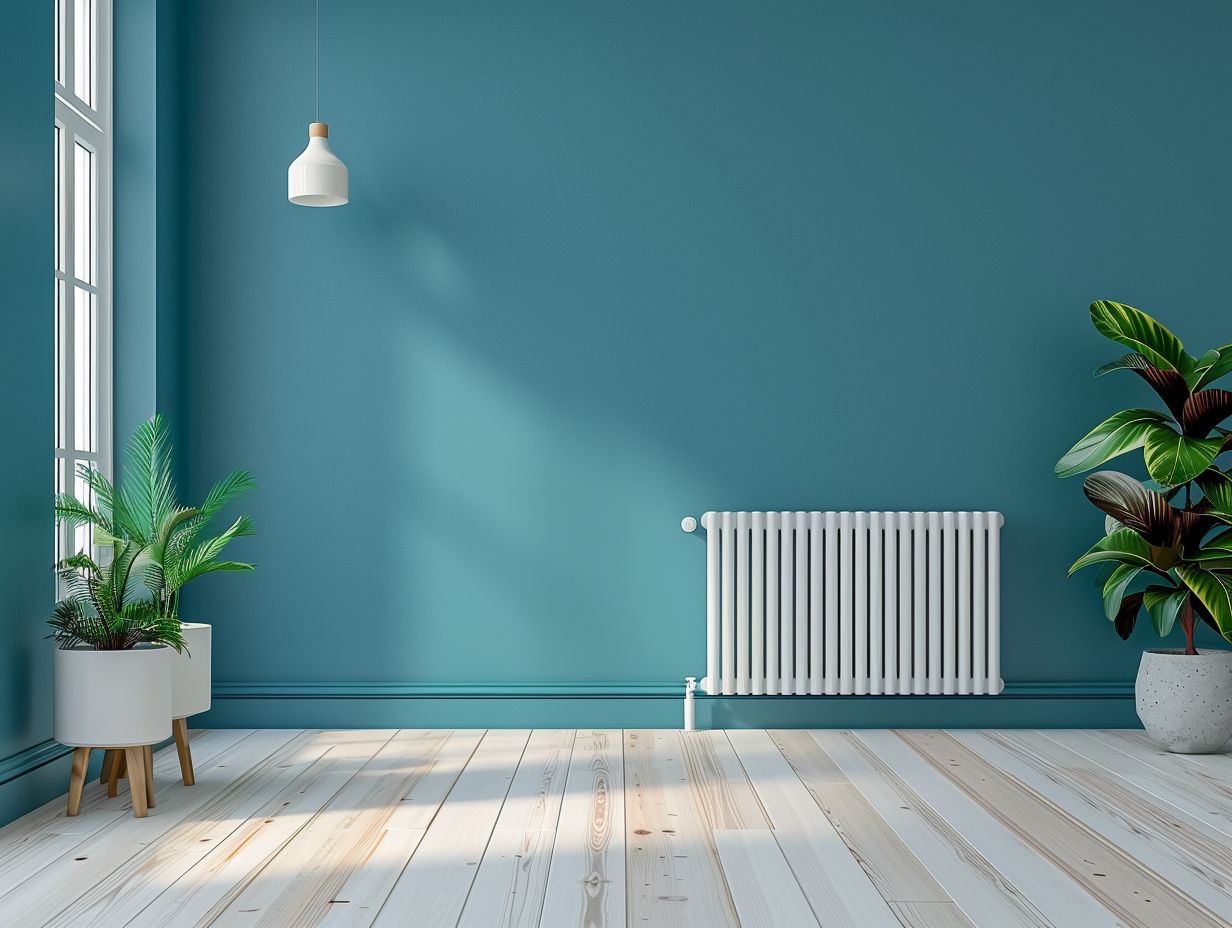
When selecting radiators, consider the importance of space utilisation and aesthetic factors. Opt for slim radiators to maximise space efficiency and explore design options that complement your interior decor choices.
It is crucial to strategically place radiators to achieve efficient heat distribution while avoiding any obstructions caused by furniture or curtains. Slim radiators offer key benefits in rooms with limited wall space, as they protrude minimally and contribute to a sleek overall appearance.
By choosing streamlined radiators, you can optimise the available floor area for arranging furniture and incorporating other decor elements. These contemporary radiator styles not only deliver heat effectively but also introduce a touch of sophistication to any room.
When situating radiators, aim to position them beneath windows or along exterior walls to prevent heat loss and facilitate optimal air circulation throughout the room.
Installation and Maintenance
To ensure the longevity and efficiency of your radiators, it is crucial to prioritise proper installation and maintenance. Regarding central heating systems, it is recommended that you seek the expertise of a professional plumber for installation.
Electric radiators provide a convenient alternative and can be readily obtained from reputable radiator showrooms.
Costs and Requirements
When you are considering radiator installation, it is crucial to calculate the BTU requirements to achieve efficient heating based on the size of the room and the levels of insulation. It is important to strike a balance between costs and energy efficiency to ensure optimal heat generation while making the most of the available space.
By utilising BTU calculators, you can accurately assess the heating requirements of your space by taking factors such as room dimensions, window type, and ceiling height into consideration. This calculation aids in the selection of radiators with the appropriate heat output capacity to effectively warm the room without wasting energy.
Efficient heat distribution is key to maintaining a comfortable indoor environment while minimising energy consumption. By strategically placing radiators in areas where heat loss is significant and ensuring proper insulation, you can improve the overall performance of your heating system.
Tips for Proper Maintenance
To maintain radiator efficiency and prolong their lifespan, you must prioritize regular maintenance. It is crucial to keep the radiators clean from dust and debris, conduct routine checks for any leaks in the pipework, and ensure that furniture or curtains do not impede the heat emitter’s effectiveness.
An effective method to improve the heat distribution of radiators is by bleeding them on a regular basis. This process helps eliminate any trapped air within the system, enabling hot water to circulate efficiently and heat the room effectively.
Additionally, consider installing a reflective panel behind the radiator to minimise heat loss through the wall. This simple addition can optimise the radiator’s heat output and enhance the overall warmth in the room.
By incorporating these practices into your radiator maintenance regimen, you can guarantee optimal performance and energy efficiency in your home.
Choosing the Right Radiator for Your Space
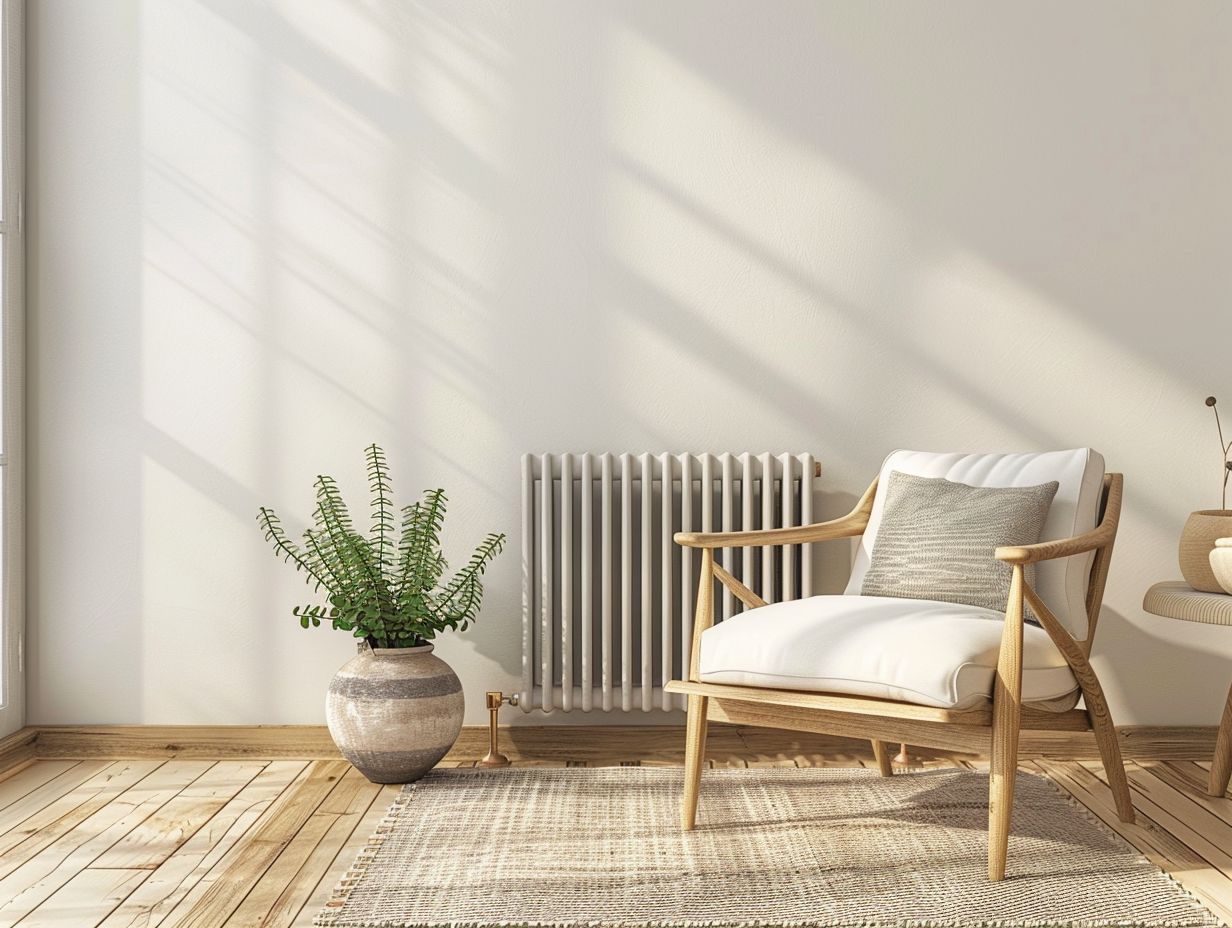
When selecting the ideal radiator for your space, you must carefully consider various factors. These include options such as designer radiators for added artistic appeal, energy-efficient models for sustainability, and traditional radiators for a classic touch.
Each type of radiator offers distinct design features and heat distribution capabilities that can be tailored to suit different preferences.
Factors to Consider
When selecting a radiator, you should carefully consider factors such as the heat emitter design, Delta T values for efficient heating, space utilisation requirements, and energy efficiency ratings.
Understanding these factors will assist you in choosing a radiator that best suits your heating needs while optimising energy usage.
The heat emitter design of a radiator is pivotal in its performance, as it determines how effectively heat can be transferred to a room. Delta T values indicate the temperature difference across the radiator and serve as essential indicators of its efficiency.
By taking space utilisation into account, you can ensure that the radiator is strategically placed for optimal heat distribution. Energy efficiency ratings aid in the identification of radiators that not only offer sufficient warmth but also help in saving on energy costs in the long term.
By carefully evaluating these aspects, you can make well-informed decisions when selecting a radiator tailored to your specific heating requirements and design preferences.
Popular Brands and Models
When considering radiators, many popular brands and models in the industry offer a combination of stylish design and efficient heating capabilities.
Showrooms specialising in radiators present a wide variety of options, including decorative panel radiators that not only function as heat emitters but also serve as distinctive architectural elements.
These aesthetically pleasing radiator designs, exemplified by products from Vogue, Bisque, and Reina, deliver effective heating solutions while enhancing the overall visual appeal of a room.
For individuals seeking a fusion of style and utility, exploring modern showroom exhibits featuring innovative models like the Milano Aruba and Stelrad Compact is recommended.
Decorative panel radiators, such as those offered by Quinn and Zehnder, are becoming increasingly popular due to their ability to seamlessly integrate into different interior design schemes, enriching spaces with their sophisticated patterns and finishes.
Frequently Asked Questions
What is the difference between horizontal heating and floorstanding heating (radiators)?
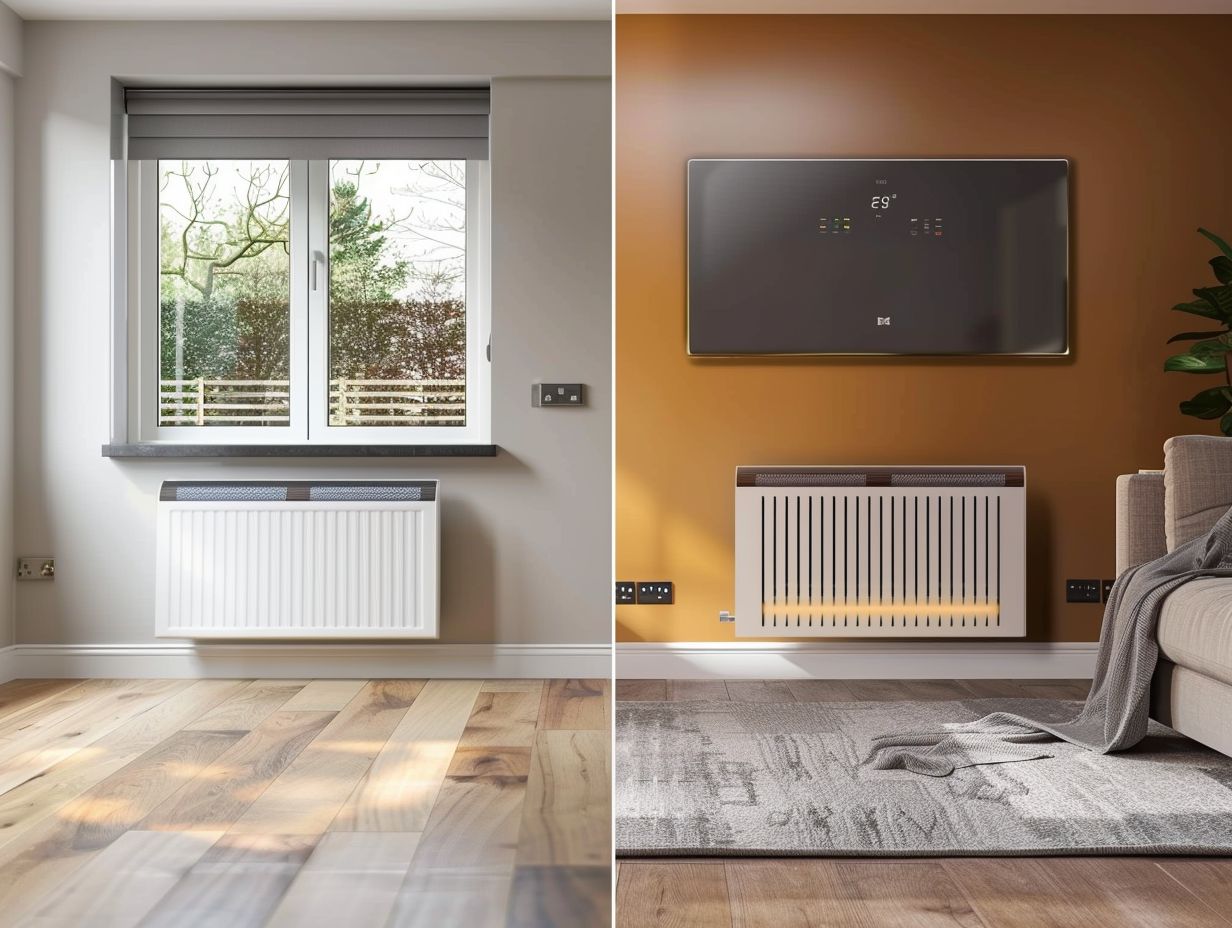
Horizontal heating refers to the orientation of the radiators, where they are installed parallel to the ground. Floorstanding heating, on the other hand, refers to the type of radiator that stands on the floor and typically has a vertical orientation.
Which type of heating is more energy efficient?
Both horizontal and floorstanding heating can be energy efficient, depending on the type of radiator used and how well it is maintained. However, in general, horizontal heating tends to be more energy efficient as the heat is dispersed evenly and efficiently throughout the room.
Can I switch from floorstanding heating to horizontal heating?
Yes, it is possible to switch from floorstanding heating to horizontal heating. However, it may require some modifications to your heating system and could potentially be costly. It is best to consult with a heating professional to determine the feasibility and cost of switching between the two types of heating.
Which type of heating is better for small spaces?
For small spaces, horizontal heating is often the better option as it takes up less floor space compared to floorstanding heating. This can be particularly beneficial in rooms with limited space, such as bathrooms or hallways.
Are there any aesthetic differences between horizontal and floorstanding radiators?
Yes, there are aesthetic differences between the two types of radiators. Floorstanding radiators can add a statement piece to a room with their tall, vertical design, while horizontal radiators can blend in more seamlessly with the wall and may be a better choice for a minimalist aesthetic.
Which type of heating is easier to install?
In general, floorstanding heating is easier to install as it does not require any modifications to the walls or floors. Horizontal heating, on the other hand, may require some drilling and mounting to install the radiators securely. However, the ease of installation may vary depending on the specific heating system and the expertise of the installer.

